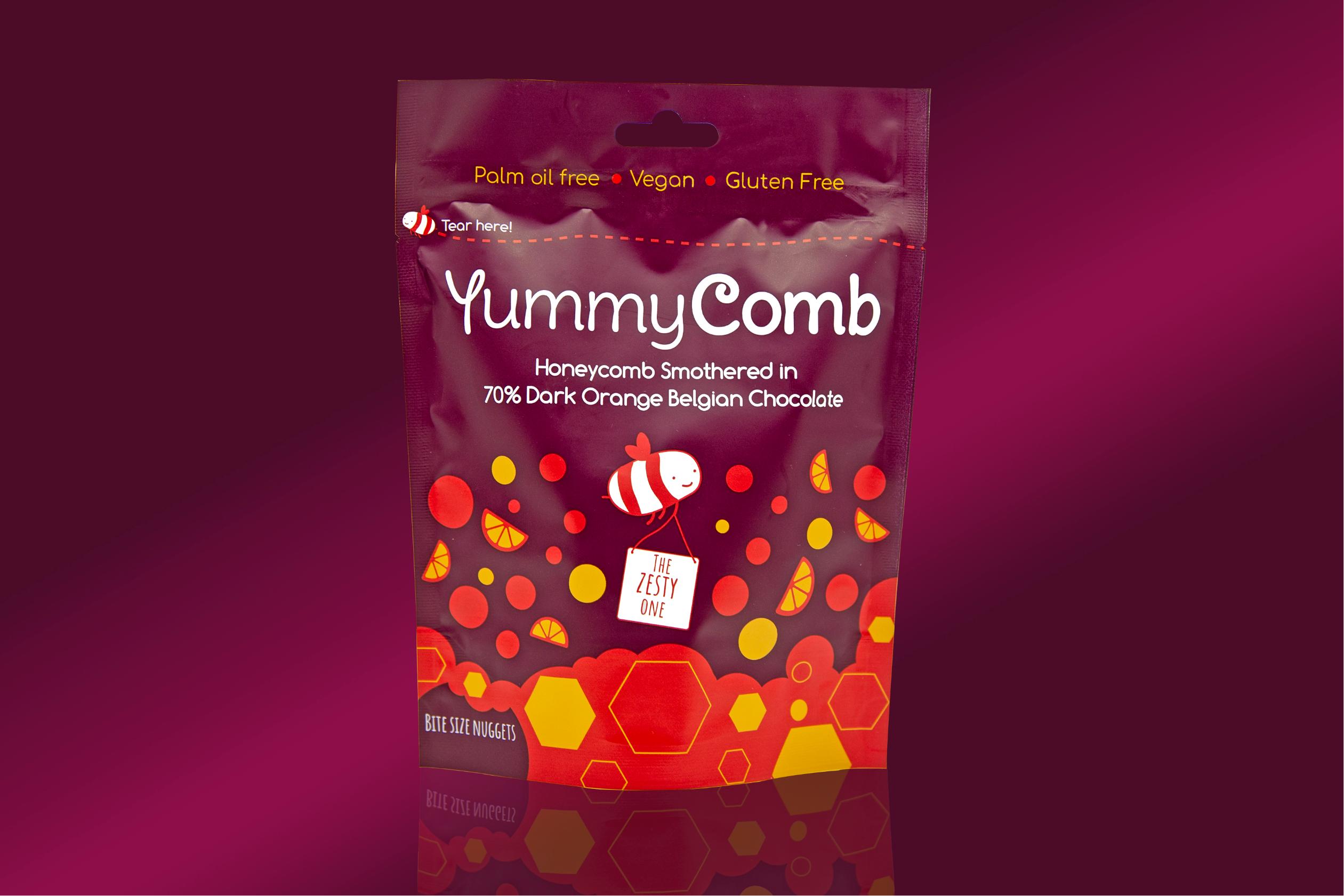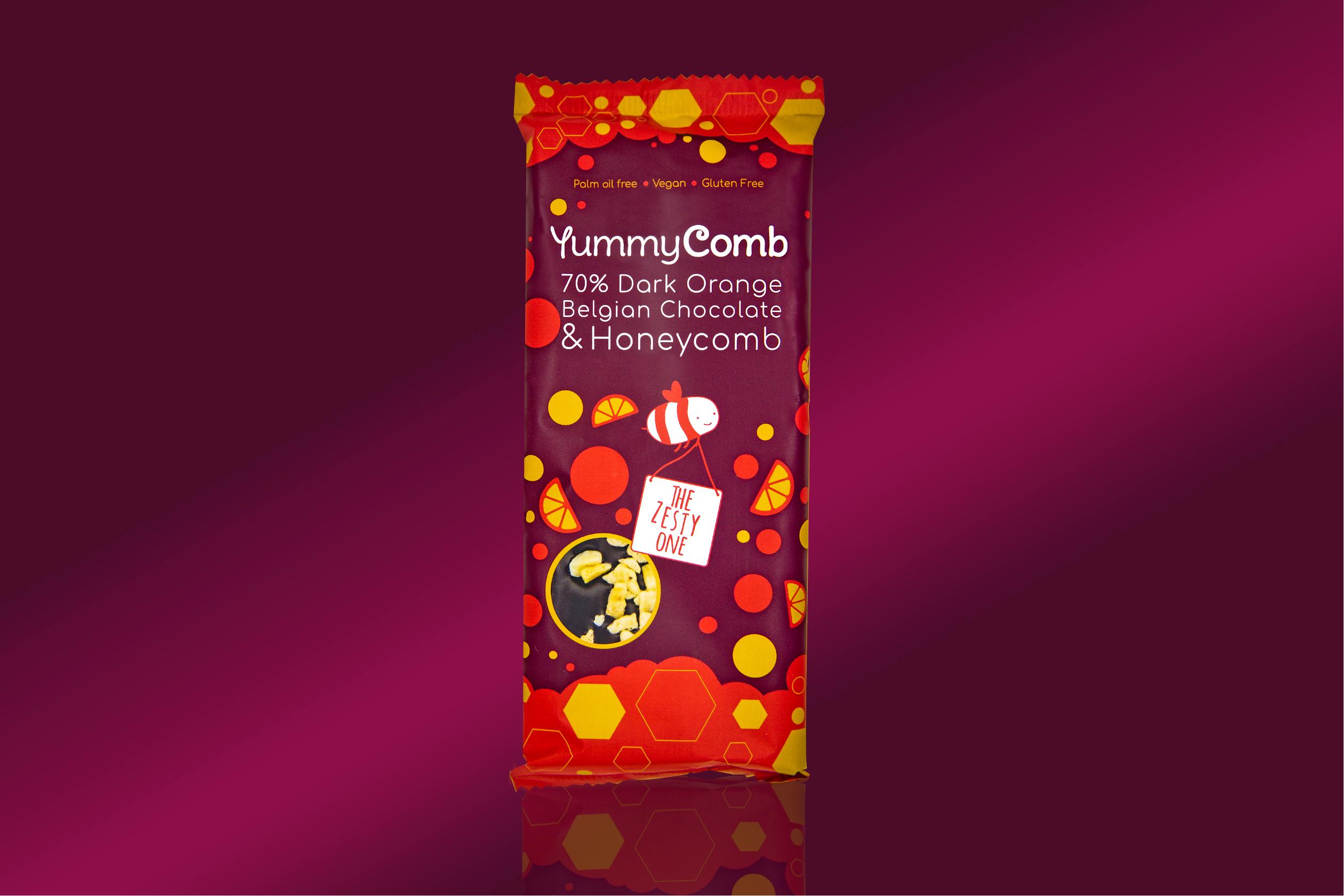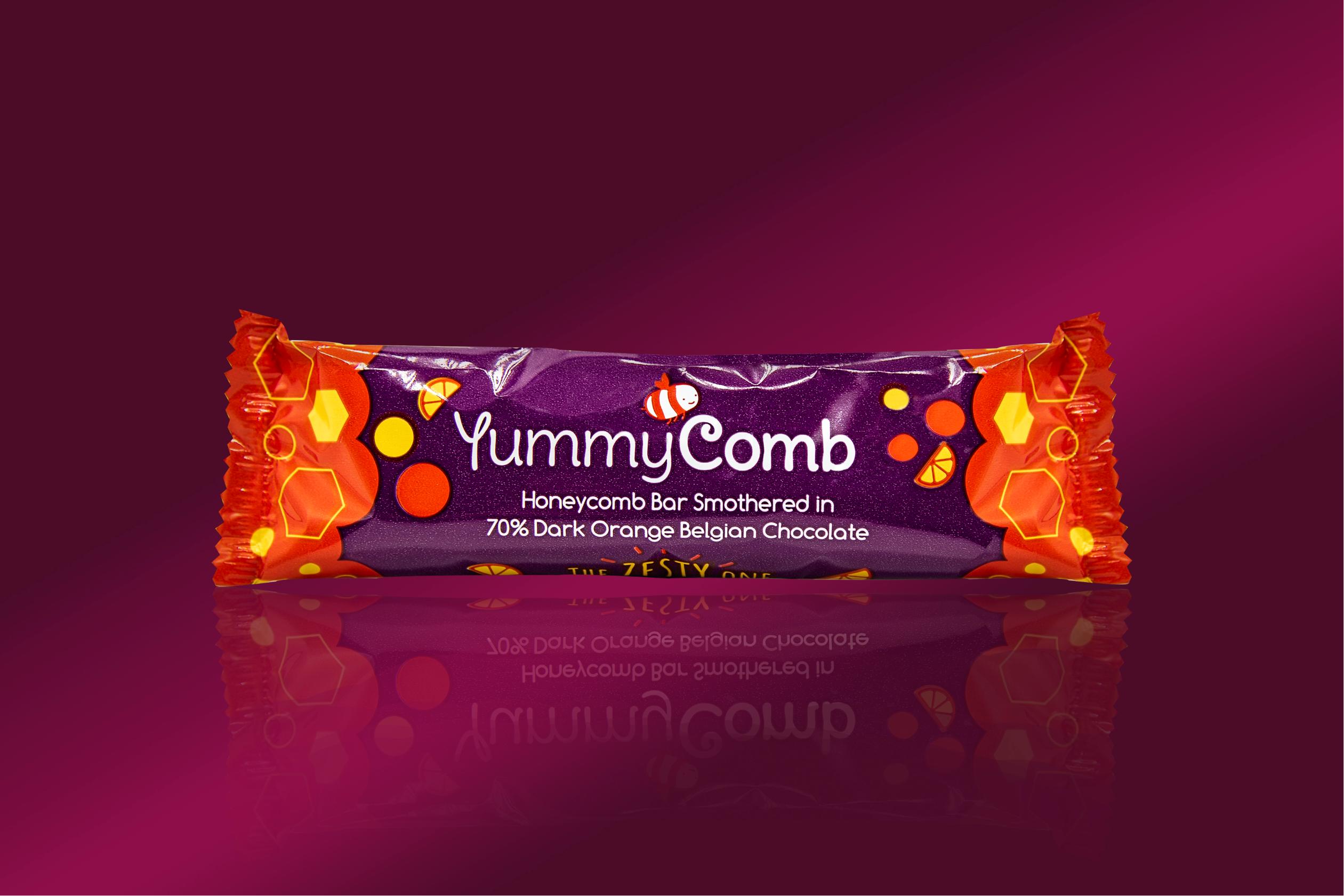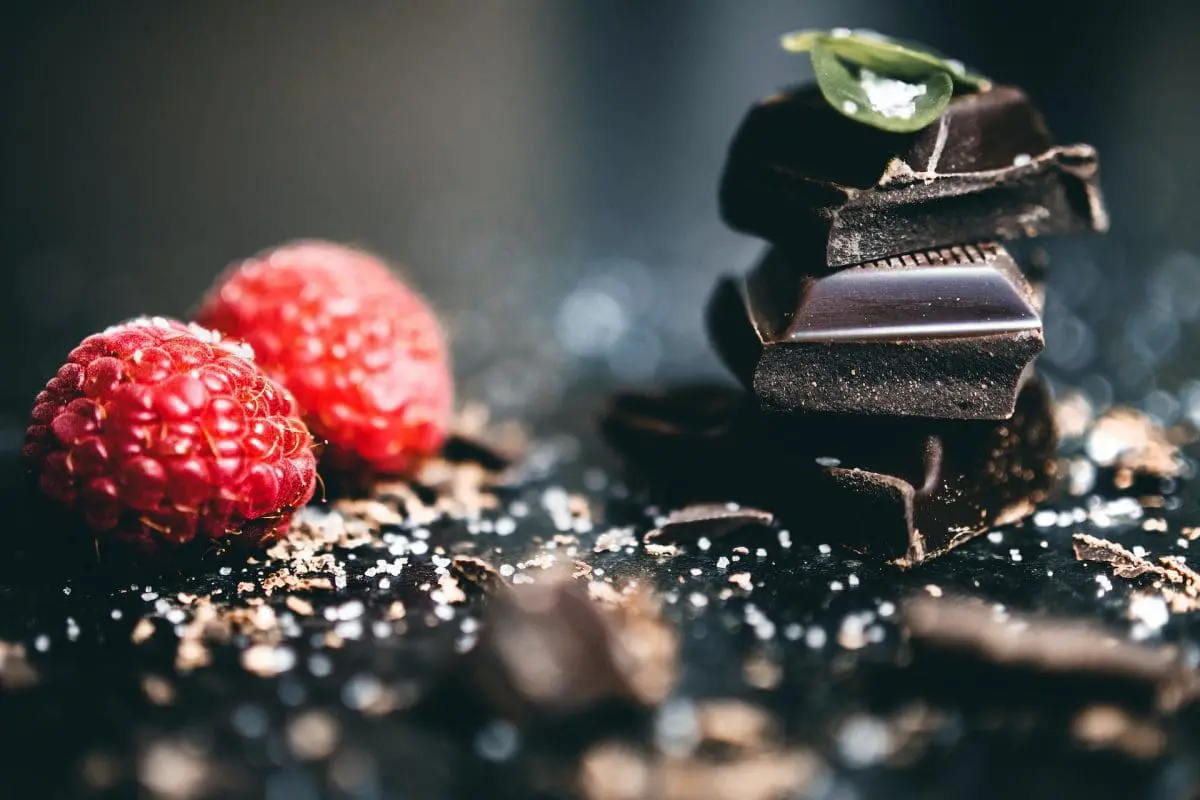Veganuary Vegan Chocolate Guide
Welcome to our comprehensive exploration of vegan chocolate, perfectly timed for Veganuary! This singular article is a treasure trove of information, recipes, and insights for all chocolate lovers, especially those embarking on a vegan journey. Let’s delve into the world of vegan chocolate, where ethics meets indulgence.
Decadent Vegan Chocolate for Veganuary
YummyComb’s 70% dark products contain no dairy/milk ingredients. Woohoo!
Embark on a culinary adventure with our collection of chocolate-based vegan recipes. This journey is not just about satisfying your sweet tooth but also about exploring the delightful possibilities within vegan baking and cooking.
First up, let’s talk about cakes. Our vegan chocolate cake is a dream come true for any chocolate lover. Imagine a rich, moist sponge that melts in your mouth, layered with a smooth, velvety chocolate ganache that’s completely dairy-free. Whether it’s for a special occasion or a weekend treat, this cake is sure to impress both vegans and non-vegans alike.
Moving on to brownies – these aren’t just any brownies. We’ve crafted a recipe for chewy, fudgy brownies that are so indulgent, it’s hard to believe they’re vegan. Packed with the goodness of cocoa and the richness of vegan chocolate chips, these brownies are perfect for when you need that chocolate fix.
And for those chilly evenings, what could be better than a cup of luxuriously creamy vegan hot chocolate? Our recipe uses a blend of rich cocoa powder and vegan chocolate, sweetened just right, and made creamy with your choice of plant-based milk. Top it off with a dollop of vegan whipped cream and a sprinkle of chocolate shavings for the ultimate comfort drink.
Each recipe is crafted keeping in mind the principles of vegan cooking, ensuring no compromise on taste, texture, or the joy of eating. We’ve also included tips on how to adapt these recipes for various dietary needs or preferences, ensuring that everyone can enjoy these delightful chocolate treats.
These vegan chocolate recipes are more than just treats; they are a celebration of the versatility and richness that vegan cooking has to offer. So, preheat your ovens and get ready to indulge in some seriously delicious vegan chocolate delights!

The Recipes
Vegan Chocolate Cake
Ingredients:
- 1 ½ cups all-purpose flour
- 1 cup granulated sugar
- ½ cup cocoa powder
- 1 tsp baking soda
- ½ tsp salt
- 1 cup warm water
- 1 tsp vanilla extract
- ⅓ cup vegetable oil
- 1 tsp distilled white or apple cider vinegar
Chocolate Ganache:
- 1 cup vegan chocolate chips
- ½ cup canned coconut milk
Instructions:
- Preheat your oven to 350°F (175°C). Grease and line an 8-inch cake pan.
- In a large bowl, whisk together flour, sugar, cocoa powder, baking soda, and salt.
- Add water, vanilla, oil, and vinegar, and mix until smooth.
- Pour into the prepared pan and bake for 30-35 minutes or until a toothpick inserted into the center comes out clean.
- For the ganache, heat coconut milk until hot but not boiling, then pour over chocolate chips. Let sit for a minute, then stir until smooth.
- Once the cake is cool, spread the ganache over the top. Allow to set before serving.
Vegan Brownies
Ingredients:
- 1 cup all-purpose flour
- 1 cup granulated sugar
- ½ cup cocoa powder
- 1 tsp baking powder
- ½ tsp salt
- ½ cup water
- ½ cup vegetable oil
- 1 tsp vanilla extract
- ½ cup vegan chocolate chips
Instructions:
- Preheat the oven to 350°F (175°C). Grease a 9×9 inch baking pan.
- In a bowl, mix flour, sugar, cocoa powder, baking powder, and salt.
- Stir in water, vegetable oil, and vanilla until well blended. Fold in chocolate chips.
- Spread the batter evenly in the prepared pan.
- Bake for 20-25 minutes, or until the top is no longer shiny. Let cool before cutting into squares.
Vegan Hot Chocolate
Ingredients:
- 2 cups almond milk (or any plant-based milk)
- 2 tbsp cocoa powder
- 2 tbsp maple syrup (or sweetener of choice)
- ½ tsp vanilla extract
- A pinch of salt
- Vegan whipped cream (optional)
- Chocolate shavings (optional)
Instructions:
- In a saucepan, whisk together almond milk, cocoa powder, maple syrup, vanilla, and salt.
- Heat over medium heat, whisking frequently, until hot but not boiling.
- Pour into mugs and top with vegan whipped cream and chocolate shavings if desired.
Remember, you can always customise these recipes to suit your taste preferences or dietary needs. Happy cooking and enjoy your vegan chocolate indulgence!
The Journey of Vegan Chocolate: From Bean to Bar
Ever wondered how your favourite vegan chocolate comes to life? The process of making vegan chocolate is a fascinating blend of art, science, and ethical practices. In this detailed exploration, we’ll take you from the initial stages of ethical sourcing of cocoa beans right through to the final crafting of dairy-free chocolate, emphasising the critical role of sustainability and ethics in the process.
Ethical Sourcing of Cocoa Beans
The journey begins in the tropical regions where cocoa beans are grown. Vegan chocolate makers often prioritise sourcing beans from farms that practice sustainable agriculture. This means no harmful pesticides, maintaining soil health, and often includes a fair trade approach. Fair trade ensures that the farmers receive a fair price for their cocoa beans, contributing to community development and better livelihoods. It’s not just about the beans; it’s about supporting the people and ecosystems behind them.
Processing Cocoa Beans
Once harvested, cocoa beans undergo fermentation and drying – crucial steps that develop the beans’ flavour. Vegan chocolate makers carefully monitor these stages to ensure the highest quality. Post this, beans are roasted, a step that further develops the chocolate’s flavour profile. Unlike conventional chocolate, roasting in vegan chocolate production is often done at lower temperatures to preserve more natural flavours and antioxidants.
Creating the Chocolate
After roasting, the beans are ground into cocoa mass. This mass then undergoes a process called conching, where it’s heated and continuously mixed for several hours. This process is vital for developing the chocolate’s texture and flavour. For vegan chocolate, makers ensure that during conching, no dairy products are used, which is common in traditional chocolate making. Instead, alternatives like rice milk powder, almond milk, or even oat milk are used to achieve the creamy texture often associated with milk chocolate.
Sweetening and Tempering
Vegan chocolates are often sweetened with alternatives to refined sugar, such as coconut sugar, maple syrup, or agave nectar, making them not just dairy-free but also more inclusive for those avoiding refined sugars. The final step is tempering, where the chocolate is carefully heated and cooled to stabilise it for a smooth, glossy finish and a satisfying snap when broken.
Packaging and Sustainability
The commitment to sustainability extends to packaging as well. Many vegan chocolate brands use recyclable or compostable packaging, reducing the environmental impact. This holistic approach ensures that the chocolate not only tastes good but also feels good, knowing that it supports ethical practices and sustainability.
Through this intricate process, vegan chocolate is crafted with care and conscience. Each bar represents not just a treat for the taste buds but also a choice for a more ethical and sustainable world. As we savour the rich, nuanced flavours of vegan chocolate, we also appreciate the thought and effort that goes into making each delicious bite.

The Health Benefits of Vegan Chocolate
Delving deeper into the health benefits of choosing vegan chocolate reveals a fascinating intersection of indulgence and wellbeing. Vegan chocolate is often considered a healthier alternative due to several key factors, including its higher cocoa content, lower sugar levels, and dairy-free composition. Let’s explore these aspects in more detail.
Higher Cocoa Content
Vegan chocolate typically has a higher cocoa content compared to many conventional chocolate products, such as YummyComb’s 70% dark products. Cocoa is rich in flavonoids, a type of antioxidant that has been linked to numerous health benefits. These include improved heart health by aiding in lowering blood pressure and improving blood flow to the brain and heart. Antioxidants are also vital in fighting against free radicals, potentially reducing oxidative stress and lowering the risk of certain diseases. Moreover, cocoa is known for its mood-enhancing properties, thanks to compounds like theobromine and phenylethylamine, which can boost endorphins and serotonin levels in the brain.
Lower Sugar Levels
Another significant advantage of many vegan chocolates is their reduced sugar content. Excess sugar consumption is a concern in many diets and is linked to various health issues, including obesity, type 2 diabetes, and heart disease. Vegan chocolate makers often use alternative sweeteners like coconut sugar, maple syrup, or agave, which have a lower glycemic index than refined sugar. This means they cause a slower rise in blood sugar levels, making them a better option for those monitoring their sugar intake, including diabetics.
Dairy-Free Benefits
The absence of dairy in vegan chocolate makes it suitable for a wider range of dietary needs, including those of vegans and people with lactose intolerance or dairy allergies. Dairy products can cause digestive problems for many people, and by eliminating these, vegan chocolate becomes a more inclusive option. Additionally, dairy-free chocolates are often lower in cholesterol and saturated fats, contributing positively to heart health.
Other Nutritional Benefits
Vegan chocolate is often enriched with other plant-based ingredients like nuts, seeds, and fruits, adding to its nutritional profile. These ingredients can provide additional fiber, healthy fats, vitamins, and minerals. For instance, almonds can add vitamin E and magnesium, while seeds like chia or pumpkin can boost omega-3 fatty acids and iron content.
Mindful Eating and Environmental Impact
Choosing vegan chocolate can also contribute to a more mindful eating approach. By opting for products that are ethically sourced and environmentally friendly, consumers can enjoy their treats with the awareness that they are supporting sustainable and cruelty-free practices. This psychological satisfaction can contribute to overall wellbeing, knowing that one’s dietary choices are aligned with personal ethics and environmental consciousness.
In conclusion, the health benefits of vegan chocolate are multifaceted, extending beyond simple nutritional value to encompass ethical and environmental considerations. It’s a choice that not only caters to personal health but also reflects a commitment to a more sustainable and inclusive food system.
Sustainable and Ethical: The Impact of Choosing Vegan Chocolate
Choosing vegan chocolate is a decision that positively impacts not only personal health but also the environment and global communities. This choice transcends the realm of dietary preferences, touching upon crucial aspects such as sustainable agriculture, fair trade, and animal welfare. Let’s delve into how opting for vegan chocolate makes your indulgence a more responsible and ethical choice.
Sustainable Agriculture
Vegan chocolate like YummyComb often sources cocoa from sustainable farming practices. These practices focus on maintaining ecological balance, preserving biodiversity, and reducing the environmental impact. Sustainable agriculture involves:
- Minimizing chemical use: Reducing the use of harmful pesticides and fertilizers, which are detrimental to both the environment and the workers who handle them.
- Preserving natural resources: Efficient use of water and soil management techniques that prevent erosion and degradation.
- Agroforestry: Integrating cocoa farming with other plant species, promoting a diverse ecosystem that supports various flora and fauna.
By supporting these practices, vegan chocolate contributes to the long-term health of the planet, ensuring that cocoa farming remains viable and does not harm the earth.
Fair Trade Practices
Vegan chocolate brands often emphasize fair trade, ensuring that farmers and workers receive fair compensation for their labor. Fair trade practices include:
- Fair wages: Guaranteeing a living wage for cocoa farmers, which contributes to improving their quality of life.
- Community development: Investing in local communities, often through direct trade relationships, which can fund education, healthcare, and infrastructure improvements.
- Worker rights: Upholding strong labor standards, which protect workers from exploitation and provide safe working conditions.
By choosing vegan chocolates that are fair trade certified, consumers help support a more equitable global trade system.
Animal Welfare
The dairy-free aspect of vegan chocolate directly contributes to animal welfare. In conventional chocolate production, dairy is a common ingredient, and the dairy industry is often criticized for its treatment of animals. Vegan chocolate eliminates the need for dairy, thereby reducing the demand for animal products and the associated ethical concerns, such as:
- Animal cruelty: Avoiding practices that are often seen as cruel in the dairy industry, such as separation of calves from their mothers.
- Environmental impact of dairy farming: Reducing the carbon footprint, as the dairy industry is a significant contributor to greenhouse gas emissions.
Environmental Benefits
The production of vegan chocolate tends to have a lower environmental impact than traditional chocolate. For example:
- Reduced greenhouse gas emissions: Animal agriculture is a major contributor to methane and other greenhouse gases. By eliminating dairy, vegan chocolate has a smaller carbon footprint.
- Lower water usage: Dairy production requires a significant amount of water, both for the animals and to grow their feed. Plant-based alternatives typically require less water.
In conclusion, choosing vegan chocolate is a multifaceted decision that benefits not just personal health but also the planet and its inhabitants. It supports sustainable and ethical practices in agriculture, promotes fair trade, and contributes to animal welfare, making each bite of vegan chocolate not just delicious but also a step towards a more sustainable and compassionate world.
Vegan Chocolate in World Cuisines: Exploring Global Flavours
Traveling the world through the lens of vegan chocolate reveals a tapestry of cultural traditions, culinary creativity, and the universal appeal of this beloved ingredient. Vegan chocolate, with its rich and versatile nature, has found its way into various traditional dishes across the globe, offering a unique twist on classic recipes and introducing new flavours to the vegan palate. Let’s embark on a culinary journey to discover how different cultures incorporate vegan chocolate into their traditional dishes.
Mexico: The Birthplace of Chocolate
In Mexico, chocolate is not just a sweet treat but a cultural heritage. The ancient Aztecs and Mayans were the first to cultivate cacao, and they consumed it as a bitter beverage mixed with spices. Today, Mexican vegan chocolate is used in ‘Mole’, a traditional sauce combining chocolate with chillies and spices. Vegan versions of Mole are used in dishes like ‘Mole Poblano’ over vegetables or tofu, showcasing the seamless blend of chocolate’s richness with savoury flavours.
Italy: Vegan Chocolate in Mediterranean Desserts
Italian cuisine, renowned for its rich flavours and culinary finesse, embraces chocolate in various desserts. Vegan adaptations of classic Italian desserts like ‘Tiramisu’ use layers of coffee-soaked biscuits and a rich, creamy mixture made from vegan mascarpone and chocolate. Another Italian specialty is ‘Chocolate Gelato’, where vegan versions utilise nut-based milks and dark chocolate, offering a creamy, luxurious experience.
India: Chocolate in Spiced Delights
Indian cuisine, with its emphasis on spices and depth of flavour, has started to embrace chocolate, particularly in vegan dishes. Vegan chocolate is used in ‘Chocolate Barfi’, a twist on a traditional sweet, combining cocoa with coconut milk and Indian spices. Chocolate is also incorporated into vegan versions of ‘Gulab Jamun’, where deep-fried dough balls are coated in a chocolate-infused sugar syrup.
Belgium: Artisan Vegan Chocolate
Belgium’s rich history in chocolate craftsmanship extends to vegan options as well. Artisan chocolatiers in Belgium craft vegan chocolates that rival their traditional counterparts in texture and richness. These fine chocolates are used in making vegan ‘Chocolate Pralines’ or as exquisite toppings on waffles, a staple Belgian treat.
Japan: Chocolate in Harmony with Matcha
Japanese cuisine, known for its delicate balance and presentation, has incorporated chocolate into its vegan desserts. ‘Matcha Chocolate’, where the bitterness of matcha green tea is combined with the sweetness of vegan chocolate, creates a harmonious blend. This fusion is seen in desserts like ‘Matcha Chocolate Mochi’, offering a chewy, sweet, and slightly bitter experience.
United States: Vegan Versions of Classic Treats
In the United States, classic confections are being reimagined with vegan chocolate. ‘Vegan Chocolate Chip Cookies‘, a staple in American households, are made using dairy-free chocolate chips. Another popular treat is the ‘Vegan Chocolate Brownie’, rich and fudgy, often incorporating ingredients like avocado or sweet potatoes for added moisture.
Middle East: Aromatic Infusions with Chocolate
Middle Eastern cuisine, with its aromatic spices and rich flavours, also embraces vegan chocolate. Vegan chocolate is used in ‘Chocolate Baklava’, a twist on the traditional honey and nut-filled pastry, where layers of filo are interspersed with nuts and rich, dark chocolate.
This culinary journey showcases that vegan chocolate is not just a substitute for traditional chocolate but a star ingredient in its own right, capable of enhancing a variety of traditional dishes from around the world. Its versatility and global appeal are a testament to the creativity of chefs and home cooks alike, who have embraced vegan chocolate to create dishes that are not only delicious but also culturally rich and diverse.
The Science of Vegan Chocolate: What Makes It Different?
Exploring the scientific differences between regular and vegan chocolate reveals a fascinating world of culinary chemistry and ingredient innovation. Understanding these differences is key to appreciating how vegan chocolate matches, and sometimes surpasses, the sensory experience of traditional chocolate. Here, we delve into the ingredients commonly used in vegan chocolate and examine how they influence taste, texture, and overall quality.
Cocoa Content and Types
Both regular and vegan chocolates start with cocoa beans, but the content and type of cocoa used can vary significantly. Vegan chocolate often boasts a higher cocoa content, which means it contains a greater proportion of cocoa solids and cocoa butter. This higher cocoa content results in a more intense chocolate flavour and a deeper, more complex taste profile. The type of cocoa bean, whether it’s Criollo, Forastero, or Trinitario, also affects the chocolate’s flavour, with each variety offering different notes and intensities.
Sweeteners
In regular chocolate, sugar is the primary sweetener. However, vegan chocolate makers frequently opt for alternative sweeteners. These can include coconut sugar, maple syrup, agave nectar, or even dates. These natural sweeteners not only cater to those looking to reduce refined sugar intake but also contribute unique flavours. For example, coconut sugar adds a caramel-like richness, while maple syrup offers a subtle, woodsy sweetness. The choice of sweetener can profoundly affect the final taste and texture of the chocolate.
Milk Alternatives
The most significant difference between regular and vegan chocolate is the use of milk. While traditional chocolate often contains cow’s milk or cream, vegan chocolate uses plant-based alternatives like almond milk, soy milk, rice milk, or oat milk. These dairy alternatives influence the creaminess and mouthfeel of the chocolate. For instance, almond milk can impart a nutty flavour and a slightly grainy texture, while rice milk might yield a lighter, smoother finish.
Emulsifiers and Additives
Emulsifiers like soy lecithin are common in both regular and vegan chocolates to maintain a smooth, homogenous texture. However, vegan chocolate may use sunflower lecithin as a soy-free alternative. Other additives in vegan chocolate are chosen for their plant-based origin, ensuring the final product’s integrity as vegan. These can include natural flavorings, fruit extracts, or nuts, which add complexity and depth to the chocolate.
Texture and Mouthfeel
The texture of chocolate is largely influenced by its fat content and the process of tempering. Vegan chocolate, with its different fat sources (like cocoa butter or plant-based oils), can achieve a similar melt-in-your-mouth quality to that of regular chocolate. The tempering process, crucial in developing chocolate’s characteristic snap and glossy finish, is performed in much the same way for both vegan and regular chocolate.
Health and Nutritional Aspects
From a health perspective, vegan chocolate is often richer in specific nutrients, depending on the ingredients used. Higher cocoa content means more antioxidants, while the inclusion of nuts or seeds can add beneficial fats and proteins. The absence of dairy makes it a suitable option for those with lactose intolerance or dairy allergies.
In conclusion, the science behind vegan chocolate is a blend of traditional chocolate-making principles adapted to plant-based ingredients. The result is a product that not only caters to dietary preferences but also opens up new avenues of taste and texture. As vegan chocolate continues to evolve, it pushes the boundaries of conventional chocolate-making, offering a delicious and ethical alternative to chocolate lovers worldwide.
Conclusion – Veganuary
Join us in celebrating Veganuary with this comprehensive guide to all things vegan chocolate. Whether you’re a seasoned vegan or just chocolate-curious, there’s something here to delight and inform. Happy Veganuary, and enjoy the chocolate adventure!



